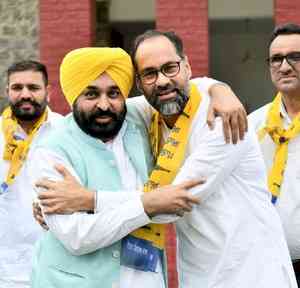Which Party has earned your vote on taxation?
Author(s): City Air NewsLondon, June 07, 2017 - Thomson Reuters looked at the headline rates of VAT, income and corporation tax from 1978 to the present day and compared these to the manifesto commitments of the winning political party...

London, June 07, 2017 - Thomson Reuters looked at the headline rates of VAT, income and corporation tax from 1978 to the present day and compared these to the manifesto commitments of the winning political party in every General Election since [1], to see which Party kept their tax promises to the British electorate.
Margaret Thatcher’s Conservative Party manifestos rarely offered detailed guidance to the depths of tax cutting that would take place, the 1979 and 1983 governments offered only the loosest commitment to cut income tax at all levels, which did then correspondingly fall. The 1987 Conservative manifesto pledged to reduce “income tax further and reduce the basic rate to 25p in the pound”; which Chancellor Nigel Lawson promptly delivered following their victory.
In line with their 1979 commitment to reduce taxation at all levels, the Conservatives reduced the highest rate of income tax; which plunged from the 1978 high of 83% (the rate paid under the Callaghan Government) to 60% following their victory in 1979. The Conservatives further reduced the rate to 40% in 1988, where it remained until 2010, when Gordon Brown’s Labour Government introduced the 50% rate.
Laurence Kiddle, Managing Director of Thomson Reuter’s Tax & Accounting UK business said: “As Thursday draws near, it’s interesting to see how the political parties have historically kept their broad brush election commitments. But tax is never as simple as the headline rates. Top rates of income and corporation tax have come down over the years but the total tax take has remained fairly consistent for the past 16 years at around 32% of GDP. Raising the headline rates makes for bad headlines. But there is increasing complexity beneath the surface.”
But the reintroduction of the 50% rate in 2010 was at odds with the previous twelve years of Labour Government, where in order to at first return and then stay in office, the Party had exercised rigid fiscal discipline; and their manifestos pledged in 1997, 2001 and 2005: “No increase in the basic or top rates of income tax for five years.” This was a pledge that Gordon Brown was unable to keep.
It took much of David Cameron’s political capital to reduce the top rate to 45% in the Coalition Government in 2013. And despite his pledge to reintroduce the 40% top rate in the 2015 Conservative manifesto, Brexit intervened and Cameron was unable to deliver.
VAT remained consistent at 15% from 1979 when Geoffrey Howe harmonised the previous two rates. The Conservative Party has increased VAT twice; in 1991 and then again under as part of the Coalition Government in 2011; neither of which was mentioned in their 1987 or 2010 manifestos. The Labour Party temporarily reduced the rate to 15% as a reaction to the 2008 financial crisis, and this has been the only time any government has reduced VAT.
Kiddle concluded: “For the first time in many years, the 2017 election seemingly offers a choice in the levels of taxation. While the Conservatives have not included an explicit tax cut in their 2017 manifesto, ministers have suggested tax rates will not rise for top earners. By contrast the Labour Party have pledged to reintroduce the 50% top rate on earnings over £123k and the 45% higher rate on earnings above £80k. Similarly, in terms of corporation tax; the Labour and Conservative Parties are proposing 26% and 17% rates respectively. It is a 1980s style ideological divide.
Whatever your political preference, I hope that our work gives voters heading to the polls on Thursday some guidance on whether political parties can be trusted to deliver on their commitments”.

 cityairnews
cityairnews 














